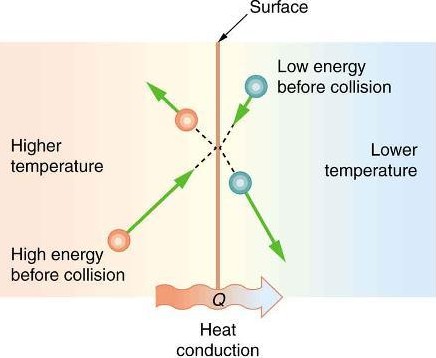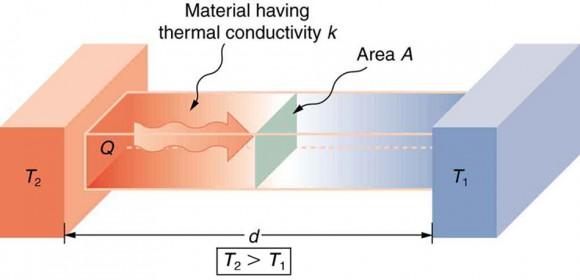Physics 212 Josh Kunz
|
Conduction of
heat is
essentially the transfer of heat from
one object to another through physical
contact.
This transfer occurs on the
molecular level when heat is absorbed on
the surface of one object and
transferred to the other object. The
molecules
in the first object move more quickly as
the heat is absorbed. They
then bump into their neighbors and pass
that energy on. This
process continues until both objects
reach equilibrium where both objectís
temperatures are the same.  (<http://www.universetoday.com/82331/what-is-conduction/>.) A lot of times the rate of heat transfer is needed to understand how well an insulator or conductor a material is. This can be found using the equation and figure found below:   (<http://www.universetoday.com/82331/what-is-conduction/>.) Q is the heat transferred in the time interval t, so Q/t is the rate of heat transfer. K is the thermal conductivity of the material, A is the cross sectional area of the object, d is the length of the object, and the temperature difference between the two materials is (Thot-Tcold). |
Home | Conduction | Convection | Radiation | Bibliography
All Right Reserved © 2006 by bprizze
http://heartlessg.4uhost.info Web Master